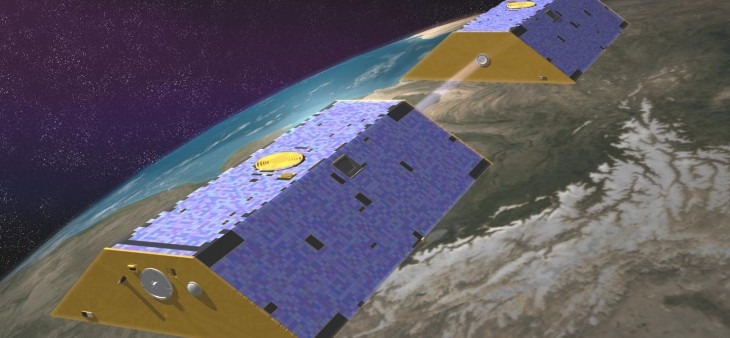
We have always been fascinated by space travel – the final frontier! Even more so when we heard about the Grace Satellites, which were launched this Tuesday (May 22) from the Vandenberg Air Force Base, California aboard a SpaceX rocket. The joint US‐German mission is to weigh the water on Earth.
The pair of satellites task is to circle the globe and measure tiny gravity variations resulting in movement mass. The reason behind these changes could be dangerous swellings in our lands caused by, yes, of course, prolonged rains, but sadly also due to the polar caps melting.
The measurements are achieved by the push and the pull between the two spacecraft as they orbit the Earth. Staggeringly the Grace Satellite missions have successfully studied how water is stored and moves across the globe due to seasonal changes, and climate change.
Among the numerous innovations pioneered Grace has monitored the loss of ice mass from Earth’s ice sheets, improved understanding of the processes responsible for sea level rise and ocean circulation, provided insights into where global groundwater resources may be shrinking or growing and where dry soils are contributing to drought and monitored changes in the solid Earth.
The Gravity Recovery and Climate Experiment Follow‐On (GRACE‐FO) mission involve two identical spacecraft that will orbit the Earth in tandem. The satellites are currently scheduled to lift off from Vandenberg Air Force Base in California atop a SpaceX Falcon 9 rocket on May 19 at 4:03 p.m. EDT (2003 GMT). After deploying the Grace‐FO satellites 305 miles (490 kilometres) above the Earth, the Falcon 9 will deliver five Iridium Next communications satellites into a slightly higher orbit, NASA officials said.
As the name implies, Grace‐FO is a follow‐on mission to the original Grace mission, which mapped Earth’s gravity field from 2002 to 2017. Both missions are joint projects between NASA and the GFZ German Research Centre for Geosciences in Potsdam, Germany. After the first Grace mission operated well beyond its planned five‐year life span, the spacecraft’s batteries eventually succumbed to their age, and the mission came to an end. With two new and improved iterations of the Grace spacecraft, however, researchers will soon be able to pick up where they left off.
Grace is an excellent example of a research satellite mission that advanced science and also provided near‐term societal benefits,” said Michael Freilich, director of NASA’s Earth Science Division at the agency’s headquarters in Washington. “Using cutting‐edge technology to make exquisitely precise distance measurements, Grace improved our scientific understanding of our complex home planet, while at the same time providing information ‐‐ such as measurements related to groundwater, drought and aquifer water storage changes worldwide ‐‐ that was used in the U.S. and internationally to improve the accuracy of environmental monitoring and forecasts.”
We shall be watching with a huge interest in the important results.
